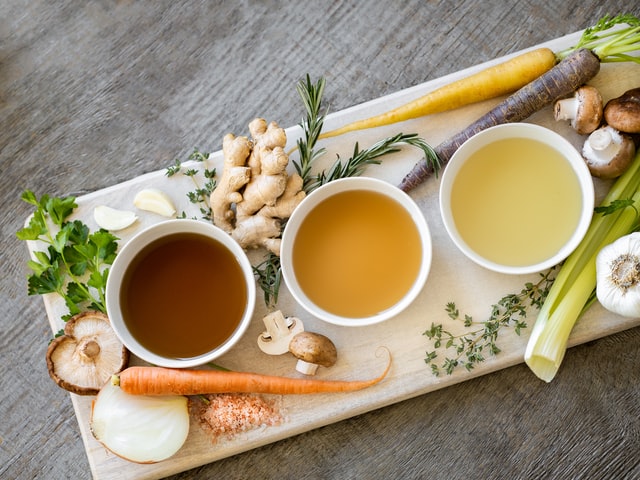Eating Well for the Cold Season

November is a beautiful time where we are in the depths of fall and awaiting winter. The qi has already begun moving downwards as we prepare for the inward transition of winter. To nourish your body during these yin seasons, you will need to slow down and incorporate rest. Yin seasons are for replenishing and storing nutrients for energy.
This is an important time to nourish both the lungs and the kidneys as well, as they are important organs of the metal and water elements, or fall and winter, respectively. Everything in Chinese medicine can be seen in terms of yin and yang; even the seasons. Fall is yang within yin and winter is yin within yin, or full yin. To nourish our yin, the fluids of the body including blood and sweat, it is important to eat nourishing foods like bone broth, eggs, sweet potatoes, kidney beans and asparagus. If you eat meat, then duck, pork, rabbit and oysters are great choices. Tofu is a great yin-nourishing vegetarian option. All of these foods are moistening and soothing our tired bodies.
Another way to nourish our yin organs is by eating specific foods that go into certain meridians. Let’s start with one of the metal element organs of fall: the lungs. A great recipe for lung nourishment is whole-grain oats, local honey and Asian pears. Other ideas for foods that nourish the lungs are cabbage, carrot, daikon, kale, leeks, mushrooms, onions, pumpkin, radish, turnip, dates, figs, lima beans, almonds and cashews. The color of the metal element is white and you will notice that many, not all, of the foods listed have a natural white-ish color like onions and the inside of pears.
The same thinking applies to the kidneys. Kidneys are part of the water element of winter and the color associated with them is black or sometimes referred to as dark like deep water. The taste associated with the water element is salty and many people will crave salty foods if they have an imbalance here. Some examples of foods that go to the kidneys include bell peppers, yams, sweet potato, some seaweed, blackberries, cherries, cranberries, lemons and limes, mulberries, strawberries, aduki beans, kidneys beans, soybeans, chestnuts, pistachios, sesame seeds, walnuts, scallops, squid, goat, duck, venison and mutton, among many other foods.
You will notice that many foods listed here grow naturally in the winter season. This is because before the modern city, people ate what was grown during each season because it was naturally nourishing to you. And it was all that was available! It is a good idea to pay attention to seasonal eating today to keep our bodies balanced with the time of year.
What we do not want to do is eat or drink a lot of physically cold foods. For example, drinking ice water is really harsh on our digestive systems. This is because your body temperature is around 98 degrees Fahrenheit. When you eat or drink something that is as cold as ice water, your body has to use energy to warm everything up before it is useful to you. This can lead to digestive upset or fatigue. You may notice these feelings after having a bowl of ice cream or chugging cold water after a workout. If you drink room temperature water, you are able to use it right away for hydration.
We also want to make sure we are eating a lot of warming foods during the colder seasons. Maybe we switch from having a cold sandwich to a warm soup at lunch and start to incorporate warming spices like basil, garlic, caraway, ginger, cardamom, chive leaf, cumin, fennel, cinnamon, horseradish, mustard seed, turmeric, thyme, nutmeg and oregano. Your body will thank you when you begin to eat with the seasons!
About the Author

Isabel Meijering is an acupuncturist in Austin, Texas, and is the owner of Admiring You Wellness. She has a B.S. in biomedical sciences with a minor in psychology and has a deep love for both eastern and western medicine, which started with her introduction to yoga and grew from there. While achieving her Master’s in acupuncture with a specialization in Chinese herbal medicine at AOMA, Isabel became a certified Tuina practitioner through the American Organization for Bodywork Therapies of Asia (AOBTA) with a specialization in cupping therapy through the International Cupping Therapy Association (ICTA). Isabel then went on to achieve her Doctorate in Acupuncture and Chinese Medicine through Pacific College of Health and Science. She primarily focuses on pain management, as well as other sources of pain. Her goal is to get patients functioning in their lives the way they have always wanted to, or have not been able to because of pain.






